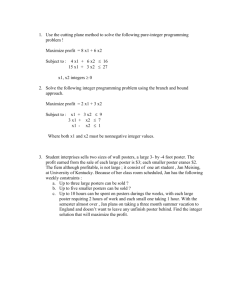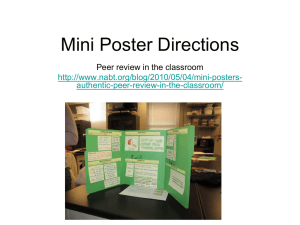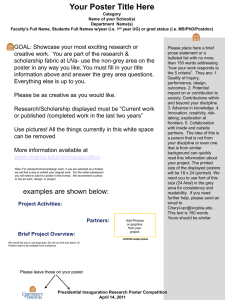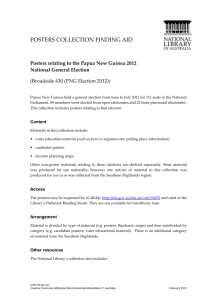Poster Session Guidelines for Presenters
advertisement
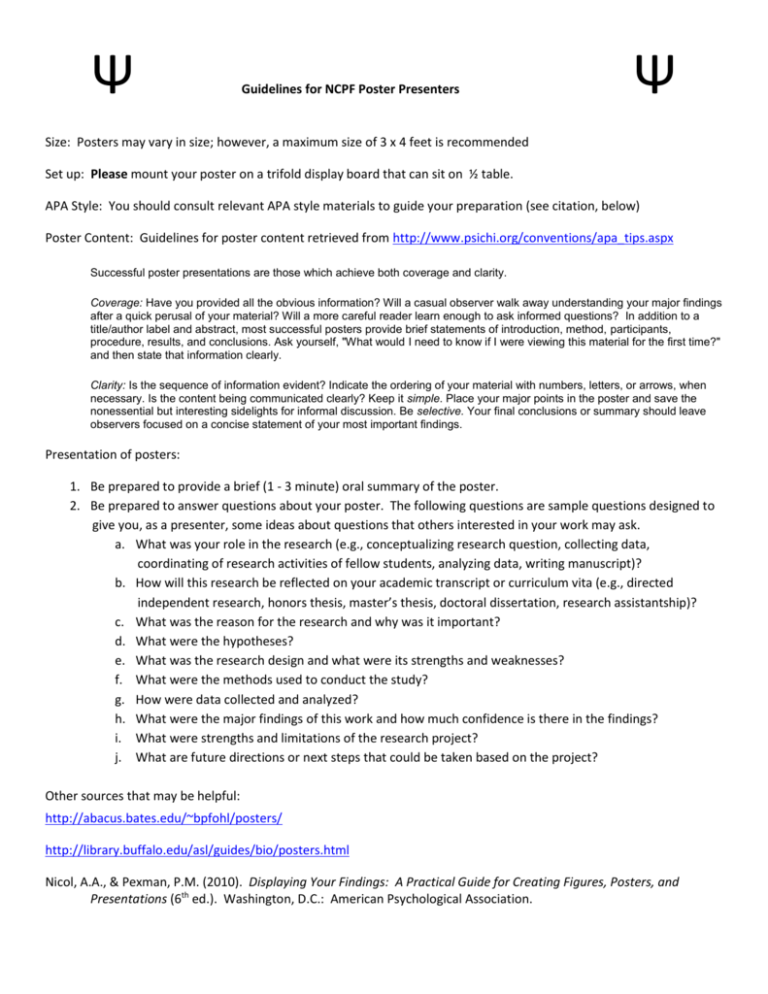
Ψ Guidelines for NCPF Poster Presenters Ψ Size: Posters may vary in size; however, a maximum size of 3 x 4 feet is recommended Set up: Please mount your poster on a trifold display board that can sit on ½ table. APA Style: You should consult relevant APA style materials to guide your preparation (see citation, below) Poster Content: Guidelines for poster content retrieved from http://www.psichi.org/conventions/apa_tips.aspx Successful poster presentations are those which achieve both coverage and clarity. Coverage: Have you provided all the obvious information? Will a casual observer walk away understanding your major findings after a quick perusal of your material? Will a more careful reader learn enough to ask informed questions? In addition to a title/author label and abstract, most successful posters provide brief statements of introduction, method, participants, procedure, results, and conclusions. Ask yourself, "What would I need to know if I were viewing this material for the first time?" and then state that information clearly. Clarity: Is the sequence of information evident? Indicate the ordering of your material with numbers, letters, or arrows, when necessary. Is the content being communicated clearly? Keep it simple. Place your major points in the poster and save the nonessential but interesting sidelights for informal discussion. Be selective. Your final conclusions or summary should leave observers focused on a concise statement of your most important findings. Presentation of posters: 1. Be prepared to provide a brief (1 - 3 minute) oral summary of the poster. 2. Be prepared to answer questions about your poster. The following questions are sample questions designed to give you, as a presenter, some ideas about questions that others interested in your work may ask. a. What was your role in the research (e.g., conceptualizing research question, collecting data, coordinating of research activities of fellow students, analyzing data, writing manuscript)? b. How will this research be reflected on your academic transcript or curriculum vita (e.g., directed independent research, honors thesis, master’s thesis, doctoral dissertation, research assistantship)? c. What was the reason for the research and why was it important? d. What were the hypotheses? e. What was the research design and what were its strengths and weaknesses? f. What were the methods used to conduct the study? g. How were data collected and analyzed? h. What were the major findings of this work and how much confidence is there in the findings? i. What were strengths and limitations of the research project? j. What are future directions or next steps that could be taken based on the project? Other sources that may be helpful: http://abacus.bates.edu/~bpfohl/posters/ http://library.buffalo.edu/asl/guides/bio/posters.html Nicol, A.A., & Pexman, P.M. (2010). Displaying Your Findings: A Practical Guide for Creating Figures, Posters, and Presentations (6th ed.). Washington, D.C.: American Psychological Association.


